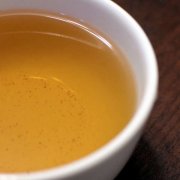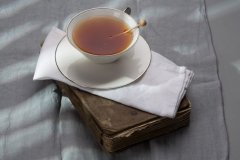How did Earl Grey get the smell of red tea and orange? Earl Grey Tea's secret recipe for tea blending
About Earl Grey Black Tea Earl Grey Tea is a kind of tea flavored with bergamot essential oil with citrus flavor and light sweetness and spices. Although the history of Earl Grey tea is unknown, its name was probably taken by the 19th century British prime minister, count Charles Earl Charles Grey, who promoted the popularity of the tea. Nowadays, Earl Grey Tea is a favorite classic drink. Bergamot is a small pear-shaped citrus fruit, mainly grown in the Mediterranean region. The aromatic essential oil extracted from the peel of bergamot citrus has a slightly spicy and citrus flavor, which will bring a unique flavor to Earl Grey Tea when added to the tea. Although bergamot is usually added to black tea to make the classic Earl Grey Tea, essential oils can be added to any type of tea to create a similar flavor. Whether you enjoy it alone or add milk and sugar, Earl Grey Tea is a great tea, no matter what kind of tea it is! Earl Grey Tea's caffeine content Earl Grey Tea contains the right amount of caffeine (about half of a cup of coffee). The amount of caffeine in tea is affected by a number of factors, including leaf size-the smaller the leaf, the higher the caffeine content in the tea. Earl Grey tea is made from high-quality broken-leaf black tea, which contributes to its moderate caffeine content. Tea varieties-teas from Chinese tea varieties tend to be less caffeinated than Indian tea varieties. Earl Grey tea is mainly made from Indian black tea. Water temperature-the higher the water temperature, the more caffeine in the tea. We recommend using completely boiled water (about 212C) to brew Earl Grey Tea. Soaking time-the longer you soak, the higher the caffeine content of the brewed tea. We recommend that Earl Grey Tea soak for three to four minutes.

Earl Grey Tea's benefits Earl Grey tea contains black tea and bergamot, both of which are rich in healthy ingredients. Earl Grey Tea's many benefits include: rich in antioxidants-like other types of tea, black tea is rich in antioxidants that can help reduce harmful free radicals and prevent certain types of cancer. Good for the heart-black tea contains flavonoids, a special compound that is key to many important health benefits of black tea. Flavonoids can help prevent plaques from accumulating in the arteries in the body, thereby reducing pressure on the heart. Refreshing-Earl Grey Tea contains the right amount of caffeine, which can replenish your energy if you find yourself exhausted. Help digestion-A cup of black tea can help digestion, especially if you have just had a big meal. Anti-inflammatory-both black tea and bergamot are famous for their anti-inflammation, and if you want to reduce inflammation, a cup of Earl Grey tea is a good choice. Strengthen your immune system and protect against disease-the catechins in black tea have antiviral properties and can help strengthen your immune system, protect against colds and prevent you from getting sick. Relieve headaches-caffeine in black tea can help relieve headaches. Bergamot has also been shown to help relieve pain. It's good for teeth-did you know that black tea is good for oral health? Black tea contains compounds that attack harmful bacteria in the mouth and help prevent the formation of dental plaque. Black tea can also inhibit the production of acids, which can corrode teeth and eventually lead to tooth decay. Guidelines for brewing Earl Grey Tea We recommend using a teapot, brewer or tea filter to make Earl Grey Tea. These brewing methods fully expand the loose leaf tea, thus making a cup of tea richer and more flavorful. To prepare Earl Grey Tea, add one teaspoon of tea to every six ounces of water in your pot or cup. Heat the water to a boil (about 212 degrees). Soak the tea for three to four minutes, then remove the tea, and you can enjoy it! Earl Grey Tea can enjoy it alone or add a little milk and sweetener.
Important Notice :
前街咖啡 FrontStreet Coffee has moved to new addredd:
FrontStreet Coffee Address: 315,Donghua East Road,GuangZhou
Tel:020 38364473
- Prev

What is the taste of authentic Darjeeling spring picking black tea? How many times a year does Darjeeling black tea in India be picked?
About Darjeeling Spring picking Black Tea Darjeeling, sometimes called champagne in tea, has long been a popular staple in the tea world. Produced in the high altitude region of Darjeeling, India, Darjeeling Tea is a kind of exquisite black tea with floral fragrance and delicate character. Darjeeling's unique growth environment, coupled with centuries of
- Next

What's the advantage of drinking rose tea regularly? What are the effects of rose black tea?
A brief introduction to Rose Black Tea Rose, a mixture of mellow Chinese black tea and rose petals, is a simple and classic blend of tea that can be used as a mild morning tea, a soothing afternoon tea, or as a subtle milk tea and latte base.
Related
- A complete list of coffee bean names and their meanings! What is Yejia Shefi coffee? Where is Mantelin coffee?
- What grade does Arida Manor Kaduai coffee beans belong to? What treatment is Arida ASD slow anaerobic sun exposure?
- The milk tea cup becomes smaller?! Overlord Tea Girl launches a new "Return to Yunnan" series
- Accused of selling counterfeit and high-priced coffee beans! Well-known boutique coffee brand "Oukelao" bowed and apologized!
- How to make espresso dumplings? Can I eat coffee and glutinous rice balls together?
- Save the unformed and stagnant powder cakes in one second! What is the problem with stagnant water in the powder bowl of the espresso machine?
- What does hand-brewed coffee stop mean? Why is it not recommended to make coffee by hand?
- Is it normal to smell like coffee? Why does coffee smell like alcohol? What's wrong with the strong smell of cold extract ice dripping ice brewed coffee?
- How to solve the problem that hand-brewed coffee extraction takes too long? Why is the water flowing so slowly when making coffee?
- The main points of making Australian white coffee, the proportion details, how does Australian white properly foam and blend the flowers?

